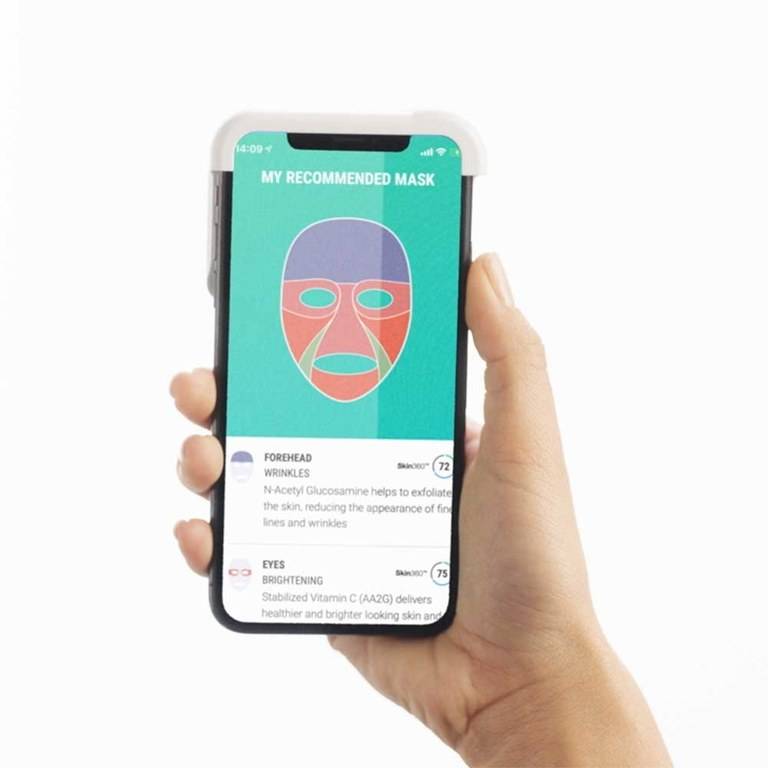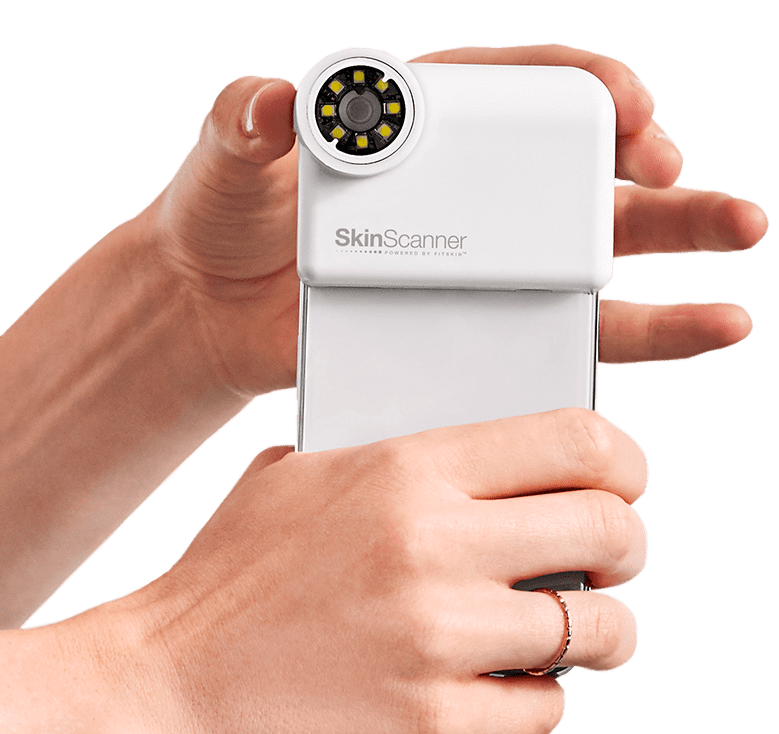[ihc-hide-content ihc_mb_type=”show” ihc_mb_who=”reg” ihc_mb_template=”3″ ]
[vc_row][vc_column][vc_column_text]

Known as the MaskiD, this beauty venture uses photographs from a smartphone to micro 3D print a face mask suited to the consumer’s skin type and desired treatment. Speaking to Condé Nast beauty publication allure Michael Southall, research director and global lead of beauty tech at Neutrogena explained:
“The key with 3D printing is [that] we can put the active [ingredient] you want just where you need it, anywhere on the mask, as opposed to one product that you’re trying to use all over the face.
“Using micro 3D-printing, we can actually get your exact eye alignment, your nose, your mouth, how high [your] forehead is.”
[/vc_column_text][vc_column_text]

The Neutrogena MaskiD
Through the IOS MaskiD application, users can create a face mask specific to their needs by first taking a photograph. Then, they can select various types of treatment to be 3D printed on the six areas of their mask; this includes the forehead, eyes, cheeks, nose, nasolabial folds, and the chin.
Additionally, with the Neutrogena Skin360 app and Skin Scanner accessory, released last year, users can further analyze the moisture, pores, fine lines, and wrinkles on the skin for the most appropriate treatments.
The Skin Scanner is compatible with the iPhone 6 onwards to the X and features 12 high-powered lights, a magnification lens, and highly accurate sensors. Although the Skin360 app and scanning accessory are not mandatory, it is said to offer a faster and more accurate assessment of the face as opposed to MaskiD’s skin questionnaire and photograph.[/vc_column_text][vc_column_text]Customized 3D printed cosmetics
A team of chemists, biologists, and dermatologists from Neutrogena’s advisory board agreed on five ingredients for the face mask. Firstly, hyaluronic acid is included to help hydrate the skin and improve its moisture barrier. Vitamin C was chosen as an antioxidant to brighten dark spots. Niacinamide, an anti-inflammatory was selected to improve discoloration in the skin, while feverfew is used to reduce redness. The final ingredient, N-acetyleglucosamine, works to minimize and smooth fine lines.
“Every face is different — everything from the shape of the face to where the individual needs of a consumer are,” added Southall.
“We’re really envisioning having a sort of library of skin-care ingredients that you could choose from that would allow you to get very specific treatments, [all] data-driven to help you understand your skin’s needs.”
Once the user is satisfied with their mask, it is submitted through the app, 3D printed by Neutrogena, and shipped to their address. Each mask can be used once, as the formula is susceptible to change depending on the user’s skin progress and adaptability.
Although no price has been specified, Neutrogena’s MaskiD will be presented at the Consumer Electronics Show (CES) in Las Vegas from the 8th-12th of January and will go on sale later this year.
Johnson & Johnson leverage additive manufacturing
As the parent company of Neutrogena, Johnson & Johnson has leveraged additive manufacturing technologies to developcustomizedd healthcare devices. Last year, the company, through its subsidiary of Johnson & Johnson Medical Devices Companies (JJMDC), expanded its 3D printed implant portfolio, with the acquisition of spinal implant specialist Emerging Implant Technologies (EIT).
Johnson & Johnson also collaborated with the AMBER research center to launch a specialist 3D bioprinting facility at Trinity College Dublin (TCD), in Ireland.[/vc_column_text][/vc_column][/vc_row]
[/ihc-hide-content]
The AM Chronicle Editorial Team is a collective of passionate individuals committed to delivering insightful, accurate and engaging stories to additive manufacturing audiences worldwide.



